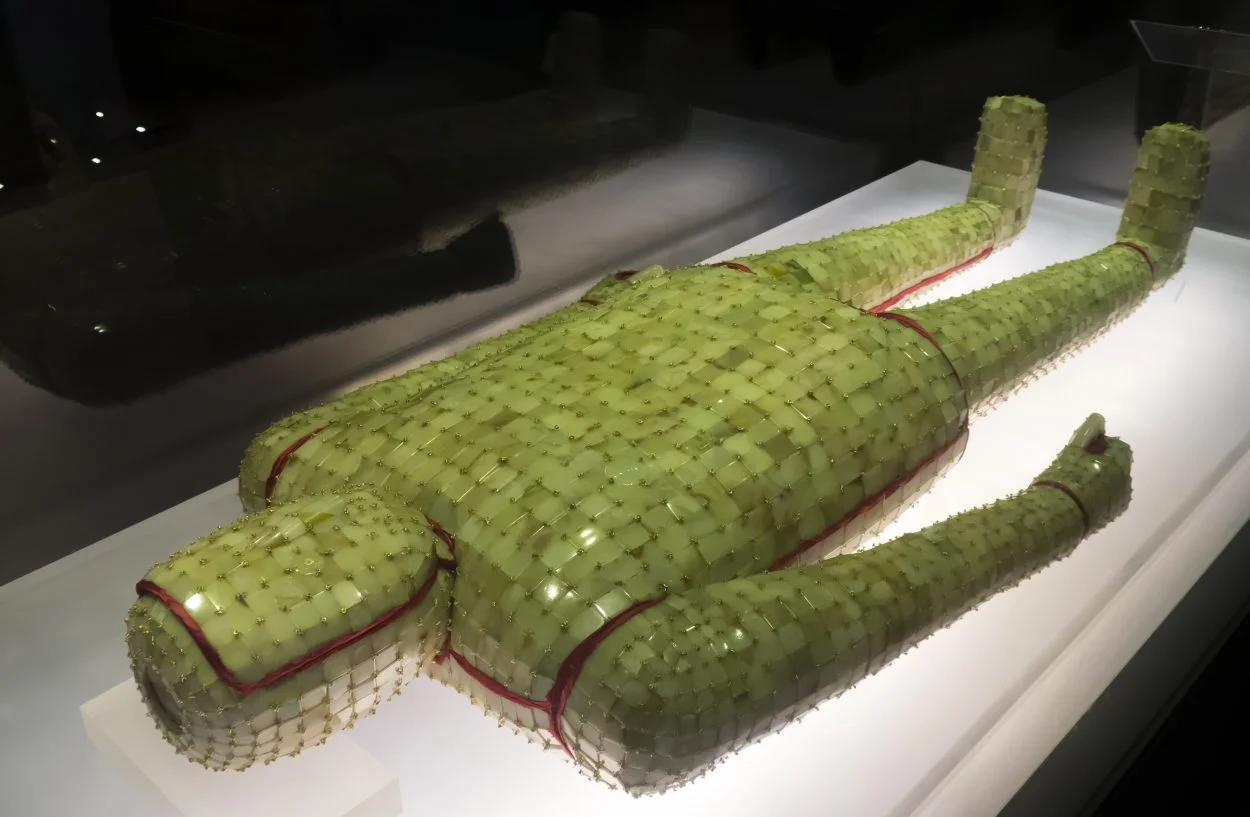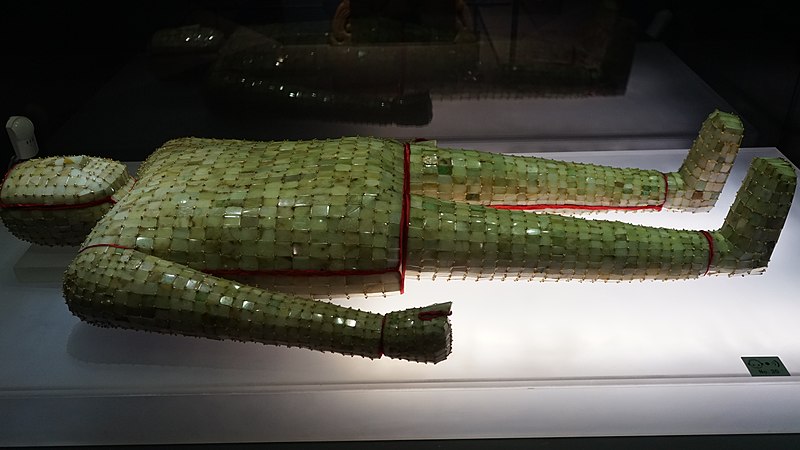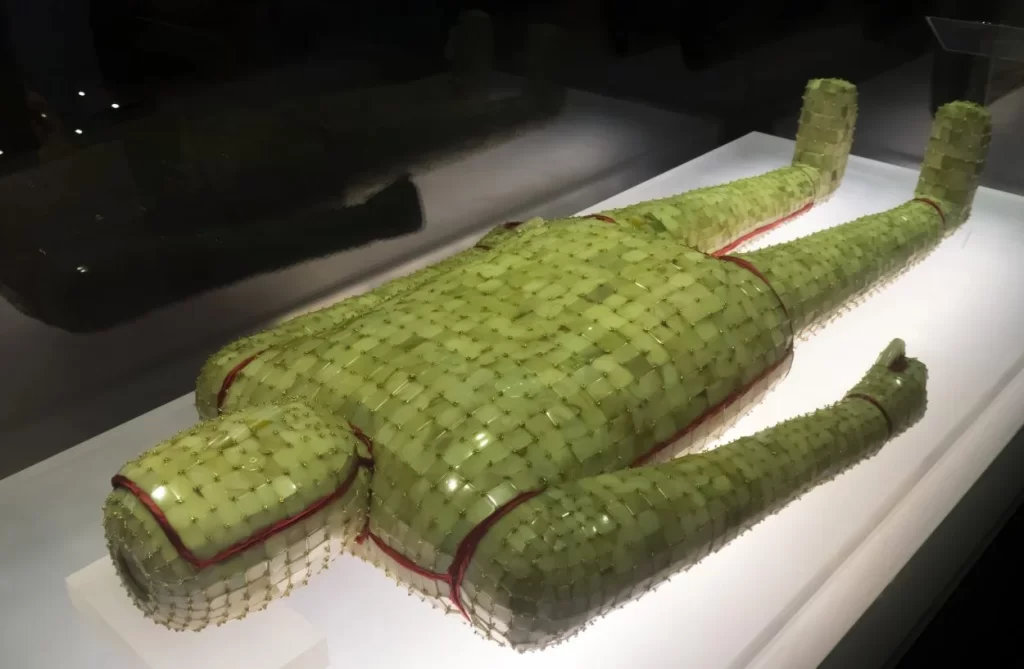In Jiangsu Province’s Xuzhou Museum, one of China’s most esteemed national treasures on display is a 1.74-meter-long jade suit comprising 4,248 individual pieces. Dating back to the Western Han Dynasty (202 BC-AD 8), this extraordinary artifact is not only the oldest but also the largest jade suit ever unearthed. Its intricate craftsmanship and cultural significance stand as a testament to the ingenuity and sophistication of ancient Chinese artisans.
The Xuzhou Jade Suit: An Icon of Ancient Craftsmanship
Alongside this remarkable jade suit, two other significant examples have been discovered in Hebei Province. One was found in the tomb of Liu Sheng, Prince Jing of Zhongshan, comprising 2,498 jade plates, while the other belonged to Liu Xiu, Prince Huai of Zhongshan, containing 1,203 jade pieces. These three jade suits represent the only surviving examples from the Han Dynasty, making them invaluable relics of Chinese cultural heritage.

Craftsmanship of the Xuzhou Jade Suit
The Xuzhou jade suit, with its 4,248 pieces, is distinguished as the oldest and largest among the trio. The jade used was sourced from the renowned Hetian jade-producing region in Xinjiang Uyghur Autonomous Region. Each piece, meticulously shaped into squares, rectangles, crescents, and triangles, measures just 1 millimeter thick and spans between 1 to 9 square centimeters. These delicate jade plates are delicately interwoven with gold threads, collectively weighing 1,576 grams.
Discovery and Excavation

Credit for the discovery of this national treasure goes to Wang Kai, curator of the Xuzhou Museum and an expert on the Western Han Terracotta Warriors. Wang’s persistent exploration of “Lion Mountain,” a 60-meter-high hill east of Xuzhou, led to the unearthing of the tomb containing the jade suit. The tomb, initially identified as a cellar for sweet potatoes, turned out to be a significant archaeological find.
Identity of the Tomb’s Occupant
Despite the grandeur of the jade suit, scholars debate the identity of its occupant. One theory posits that it could be Liu Yingke, son of Liu Jiao and nephew of Liu Bang, who briefly held the title of Prince of Chu before his death in 178 BC. Another theory suggests it might be Liu Wu, Liu Yingke’s son, who later participated in the Rebellion of the Seven States against the Han Dynasty after inheriting the title in 174 BC.

Cultural Significance and Legacy
The Xuzhou jade suit exemplifies the pinnacle of ancient Chinese craftsmanship, showcasing the technical skill and artistic vision of Han Dynasty artisans. Its discovery has provided invaluable insights into the cultural and political dynamics of its era, highlighting jade’s enduring significance as a symbol of prestige and influence in Chinese society. The preservation and exhibition of this national treasure at the Xuzhou Museum serve as a testament to China’s rich cultural heritage, drawing admiration and scholarly interest from visitors worldwide.

The jade suit from Xuzhou stands as an awe-inspiring testament to the exceptional craftsmanship and cultural legacy of the Han Dynasty. Beyond its artistic beauty, it offers a profound glimpse into ancient Chinese beliefs, practices, and societal hierarchies. As one of the most significant archaeological discoveries of its kind, the Xuzhou jade suit continues to inspire fascination and appreciation for China’s rich historical heritage and the enduring allure of jade as a symbol of imperial splendor and craftsmanship.
